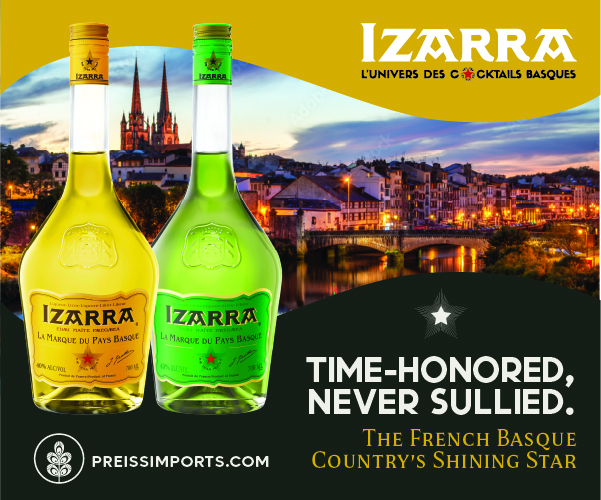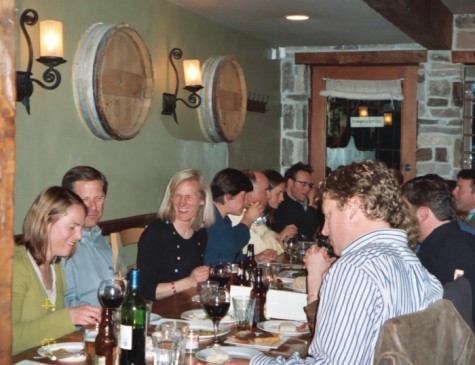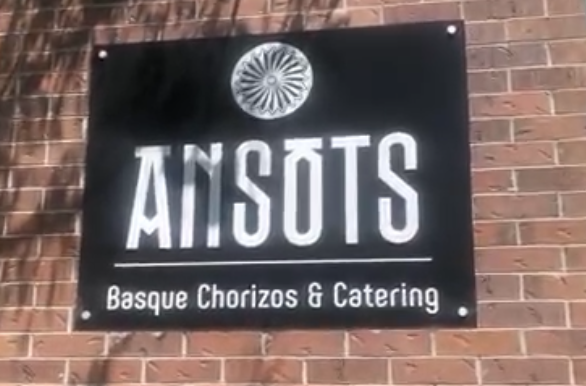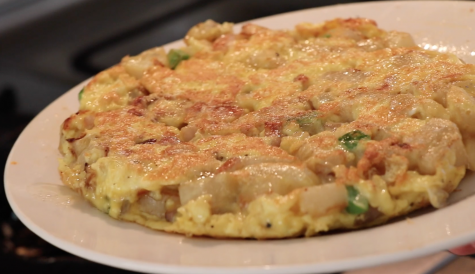Nevada Artist Completes Residency in the Basque Country
Art and anthropology, complementary tools for living and reflecting on life
Artist Zoe Bray during her residency in the Basque Country.
March 9, 2023
Northern Nevada-based artist Zoe Bray recently received a grant from the Elkano Foundation, the Basque Writers’ Association and the Basque Cultural Institute to spend a month in residency at the nature reserve of Abbadia, in Hendaia, on the Atlantic coast in the Basque Country. Bray spent the month of October 2022 writing and illustrating her second children’s book. Here is the English translation of an interview with the Basque Cultural Institute. The interview was conducted by Jasone Iroz and the photographs are by Laukitikat for the Basque Cultural Institute. Buy Bray’s book on Amazon.
—
From an early age, living with her parents in different countries, Zoe Bray felt the need to understand the workings of societies. Polyglot and adventurous, Bray said the Basque language and the Basque Country have a special place in her life. With the writer’s residency, she has added a pen to her worktable, alongside paintbrushes and academic books: a perfect kit for storytelling and sharing ideas.
As an artist and an anthropologist, how do you combine creativity and analysis in your work?
The context of an artwork is key to its being – I ask myself why I created it, what is it for, why I use certain materials and not others, what relevance does it have and to whom? I studied anthropology before studying art, and so my training as an anthropologist pervades my artwork. As both an anthropologist and an artist, I am concerned with identity – how do we humans make sense of ourselves and how do we relate to our surroundings?
Tell us more about your background
My father is English and my mother is French Basque, although she doesn’t speak Euskara. We lived in various parts of Europe thanks to my father’s work as a journalist. My brother was born in London, I was born in Paris, and my sister in Rome. About every three years we moved to another capital – Brussels, Madrid.. And it was a given that we learn the local language and adapt to our surroundings. So, for me, switching from one language to another is normal.
My mother, Josette Dacosta, worked in arts education and is an artist herself, producing large powerful abstract paintings. I learnt a lot seeing her work.
I started traveling on my own at 18, working as a volunteer in Mexico and visiting my Basque cousins in California, and then I settled in Edinburgh to study anthropology at university. Wherever I was, I loved discovering local arts. But when making a choice of what to study at university, it made most sense to me to focus on acquiring the analytical skills to understand human society. I suppose I chose anthropology because of having grown up in all these different places. I wanted the intellectual tools to analyze culture, social relations… these things that guide human perception and behavior.
As a child, I also wanted to learn the Basque language – we spent school holidays in the valley of Oztibarre and there, my Amatxi (grandmother) chatted with neighbors in Euskara, but as soon as my siblings and I were present, she would switch to French. Finally, while at university, I got a chance to focus on Euskara – I wrote my dissertation on the politics of language in education and so spent more time in the Basque Country. I think this is when I became more aware of my own identification with being Basque.
ARTICLES by ZOE BRAY
Granddaughters of Basque Immigrant Create Successful Reno Food Coop
Modern Basque Dance Group in Northern Nevada
Nevada Basque Sheep Ranch Adapts to Changes
Later, I got a scholarship to work on a PhD at the European University Institute in Florence, and this time I did research on indigenous languages across state borders– this was the late 1990s when there was talk of opening up the European Union. And so I went again to the Basque Country, this time to the area known as Txingudi, which includes the towns of Irun and Hondarribia on the Spanish side of the border and Hendaia on the French side.
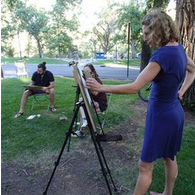
I always made art in private. But it was in Florence that I had my artistic awakening. I discovered a painter’s atelier in a de-consecrated church, and it woke in me the decision to go for it. So while working on my PhD, I started also studying to become a portrait painter. We had models posing for us six hours every day! To cover the fees, I had various odd jobs, as cleaner, model, in-house writer, and finally, I shared a studio with other painters and worked half the day as researcher at the European University Institute.
I then went to London and Berlin where I lived from commission work. Finally, I left Europe in 2011 to go work at the University of Nevada Reno, teaching at its Center for Basque Studies. Nevada was new territory to me, even though, serendipitously, this is the part of the US where my Basque grandmother’s father had been a sheepherder a hundred years earlier!
After four years, I left Reno to work with my spouse at the Hebrew University of Jerusalem, Israel. With my little family, we lived there for more than three years. This was an intense time, I gave birth to our second child, and I was involved with Israeli and Palestinian activism. One of my memorable moments was being with Bedouin and Palestinian sheepherders in the gorgeous hills of the West Bank, accompanying them in places threatened by Israeli settlers. I witnessed a great deal of violence. Through my artwork, I was able to connect with very different sections of the local population, across religious, ethnic and political boundaries. The experience confirmed how art can make a difference in people’s lives and build bridges across divides. It’s a source of enjoyment, liberation and meditation and can be an effective form of communication. In 2018, with my family, we decided to return to Nevada, which we now call home.
Art and anthropology: are they complementary?
For me, art and anthropology are related and complementary. They are both about working with life, immersing yourself in it and reflecting on it. The question of representation – what we represent, who and how and with what intention – is key to anthropology and art. How humans see the world and choose to depict it needs to be unpacked, and each discipline informs the other on this.
I presently work essentially as an artist. Rather than teach and write about anthropology as I did when I was employed at a university, I now teach and make art with anthropological thinking. Through my artistic practice, I seek more direct contact with people. So live performances are an important part of my artwork. I love to paint in public and have people witness the process. I get invited to paint in museums and other public places. Painting in public gets art out of the exclusive setting of the studio – people can observe the creation of a portrait and take part.
As an artist, are you primarily a portrait painter?
As a painter, I focus on human beings, just as in anthropology. What draws me to portraiture is the opportunity to focus on individuals, converse with them, spend time in their presence, observe them – these are opportunities that we seldom have nowadays in our fast-paced world, stimulated by lots of images, but which don’t allow for slow-paced contemplation. This is what anthropology is also about – giving the necessary time to people and to things to know them better. A person must pose – and pause longer – for a portrait. I’m also a bit of a shy person, so portrait painting gets me out of my shell!
Because of the time involved in posing, the model may appear serious in the painting – when you pose, after a while, you relax your smile! I am interested in what makes a person – their inner character and soul as much as their identity. I think also of the politics of representation, the power of the person doing the representing (me), but also the agency of the model, the involvement of the viewers, and our collaboration. Portraiture affirms the existence of a person and provokes conversations about who we are.
I also paint landscapes and objects. I seek the beauty in ‘ordinary’ things. I am conscious of how we humans anthropomorphize the natural environment, so when I’m painting ‘nature,’ I’m aware of how it reflects our relationship to it.
My art training is based on traditional fine-art techniques, and there, the main references are inevitably Leonardo da Vinci, Artemisia Gentileschi etc. I am inspired by their beautiful renderings and their close attention to both detail and the larger picture. Many contemporary painters also inspire me. I love the boldness of Paula Rego’s way of telling stories through simple and dramatic figurative paintings.
Abstract painting and sculpture also interest me. Right now, as I attempt to lead a more waste-free and sustainable way of life, I am working on ecological art – art that is made with organic material and is environmentally conscientious – and I am inspired by the work of artists such as Andy Goldsworthy that work with nature. I also look to the paleolithic cave paintings we have in and around the Basque Country.
I have also always done illustration but it hasn’t been so public until recently, although I have had a regular appearance in the magazine Herria for over a decade. My illustrations provide a more playful way of expressing myself. It’s close to the naturalism I seek in my portraiture – I aim to draw life, with humor. Depicting children playing outside is my all-time favorite theme.
How do you feel about the art world in the Basque Country?
I find it very exciting. As an artist working outside the Basque Country, I am unfortunately not as involved with it as I would like. But I observe the richness and diversity, and it inspires me from afar.
I grew up loving the early 20th century figurative paintings that I saw in public places across the Basque Country. At the same time, it struck me how they imposed a way of seeing and defining what it is to be Basque. I enjoyed discovering alternative depictions by artists like Vicente Amestoy and Rosa Valverde. And today, powerful feminist visions and experiences give a fuller picture of what the Basque Country is.
Now we have to add “writer” to your Curriculum Vitae
Until recently, the only writing I’d done was academic and journalistic. I fantasized about writing stories, but the moment only came with the COVID lockdown. This was the culmination of so many things that are harmful about how we human beings behave and how we relate to our environment. As I sought to lead a peaceful daily existence with my two children playing outside, it came naturally to me to finally put pen to paper and write my first story, called ‘Zer Xuxurlatu didan Amatxik’ (in English: ‘What Amatxi Whispered’). Click here to buy it from Amazon.
It was very pleasurable writing in Euskara – it was also a great way to practice – here in Nevada, even though there are Basque speakers, we don’t often see each other. I then asked my friend, Piarres Erdozaintzi, to check the accuracy of my Euskara, especially keeping faithful to local expressions. And it was natural for me to produce the illustrations in pencil and watercolor alongside the text.
‘What Amatxi Whispered’ celebrates nature and indigenous knowledge. The story was also an attempt to remind my children of their ties with the Basque Country, despite living on the other side of the planet. I wanted to highlight that caring and connecting with the land transcends any national identification.
‘What Amatxi Whispered’ got published with the Center for Basque Studies last year. After that, I hadn’t planned on writing another story as I was focused on teaching children about art and nature, but I was thinking about how best to communicate with them and their families about engaging in a more ecologically conscious way of life – here in the American West the consumption of single-use plastics and processed food, constantly moving around by car and staying in front of screens watching TV or playing video games is huge, and so I was thinking about a story of a child who gets out and makes positive changes. Of course, I am inspired by all these awesome young activists across the globe.
This grant with the Elkano Foundation and the Basque Writers’ Association encouraged me to try writing again. The 16th century navigator Sebastiano Elkano served as a steppingstone to think about what it is to be a child living in the 21st century, with all the scientific and global knowledge that we have today and at the same time the ecological degradation. My story, called ‘June ta Mundua’ (‘June and the World’), tackles the theme of Basque presence across the world, characterized by both indigenous identification and a spirit of independence, but also complicit with capitalist and colonialist forces.
The story focuses on a child living in Nevada, a state in the American West to which many Basques emigrated over the last two centuries. This child, called June, is a product of globalization, kickstarted by Elkano’s achievement. She is born to parents of different origins, lives in a different place to where she was born, travels by plane, feeds on food and information from all corners of the globe, and is a witness to the climate crisis – the rapid ecological degradation caused by humans. June is American but also Basque, because she identifies with her grandmother who lives in the Basque Country. The story tackles the issue of pollution by single-use plastic that is strewn across the land and in waterways. June and her friend gain awareness of the problem and mobilize their peers to do something about it.
I want this story to be the start of a series about young people engaging positively with their environment. It has both an ecological and philosophical dimension: How do children make sense of their existence in today’s world? How do they see their impact on the environment? And what significance should be given to identity? The story raises existential questions, but most crucially offers empowerment. It aims to inspire wonder for the natural world as well as a taste for adventure and discovery, combined with respect for and connection with nature.
Like Elkano, you love to travel
I have loved traveling and living in different parts of the world, but I don’t travel all that much nowadays. I rarely take a flight to go visit another part of the world for just a few days. I am conscious of my carbon footprint. Whenever I can, I cycle. I travel more by necessity, especially to go visit family once a year in Europe. In any case, while I think it’s good to force oneself out of one’s comfort zone, I don’t think traveling necessarily helps to better understand the world. I think it’s possible to do that staying in one place and feeding one’s mind by reading as widely as possible and opening oneself up to discovering all the things that are right here at home. What’s important, I think, is to take risks in one’s daily life, and to get to know everything around oneself. When you pause and take a fresh look wherever you are, you can see and feel so much more.
You still have strong links with the Basque Country, even though you live on the other side of the world.
My parents now live in the Basque Country, in our family home in Izura, so thanks to them I can call the Basque Country home. They have also done inspirational things in the arts, including creating an association in Donibane Garazi called Itzal Aktiboa to showcase Basque contemporary art. I have discovered more amazing Basque artists, thanks to them.
Is caring for intangible heritage important for you?
Intangible heritage is priceless – it’s life itself! But we mustn’t forget the interconnectivity of things – there is no question that speaking Euskara, and making music, theater, dance and literature in Euskara is an essential part of our Basque heritage, but doing so while consuming single-use plastic, eating junk food, trashing and polluting your environment makes no sense. For me, being Basque goes hand in hand with knowing and caring for your natural environment. Safeguarding the landscape in which we live is fundamental to a solid sense of self and heritage. We cannot take for granted the natural environment which provides the core of who we are.
Do you have time for any other activities?
I love being outside and physically active. Hiking, cycling, surfing, swimming in rivers all give me freedom and peace of mind. For me, it’s important to play and be physical, not just cerebral.
I am inspired by the grassroots social movements going on in the Basque Country. For me, it’s clear that identifying with being Basque is about engaging in local social, economic and environmental justice. I admire especially what the grassroots movement Bizi! is doing.
One thing I have trouble with in the Basque Country is all the driving one has to do to be involved locally; it’s hard to avoid taking the car. If only public transport were more widely available! It pains me every time I return to the Basque Country to see more trees cut down, fields getting larger, more tarmac.
Is there a particular Basque character that inspires you?
I am inspired by Basque mythological figures that remain relevant to how we can lead our lives grounded today – Lamiak for instance, as spirits of the wilderness. My dream is for children everywhere to be empowered to know their environment, connect with their own wilderness and be sustainable stewards.
And a dream?
My personal dream is to improve my Euskara – at some point I hope to be able to spend a nice long period with my children studying at AEK (the association teaching Basque literacy) in Urepele. And then I’d write and illustrate more stories about children having adventures in nature!

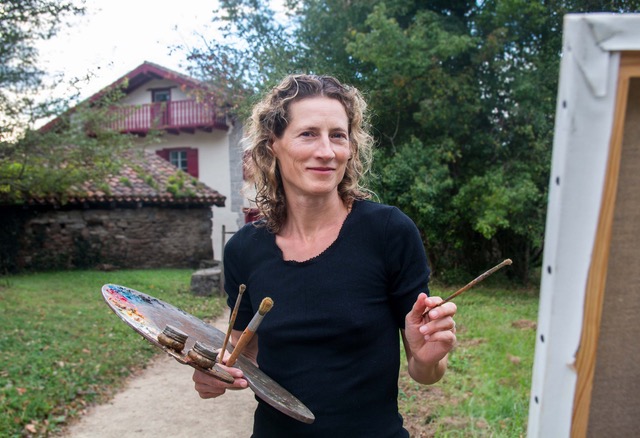

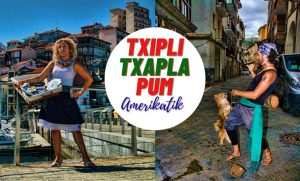
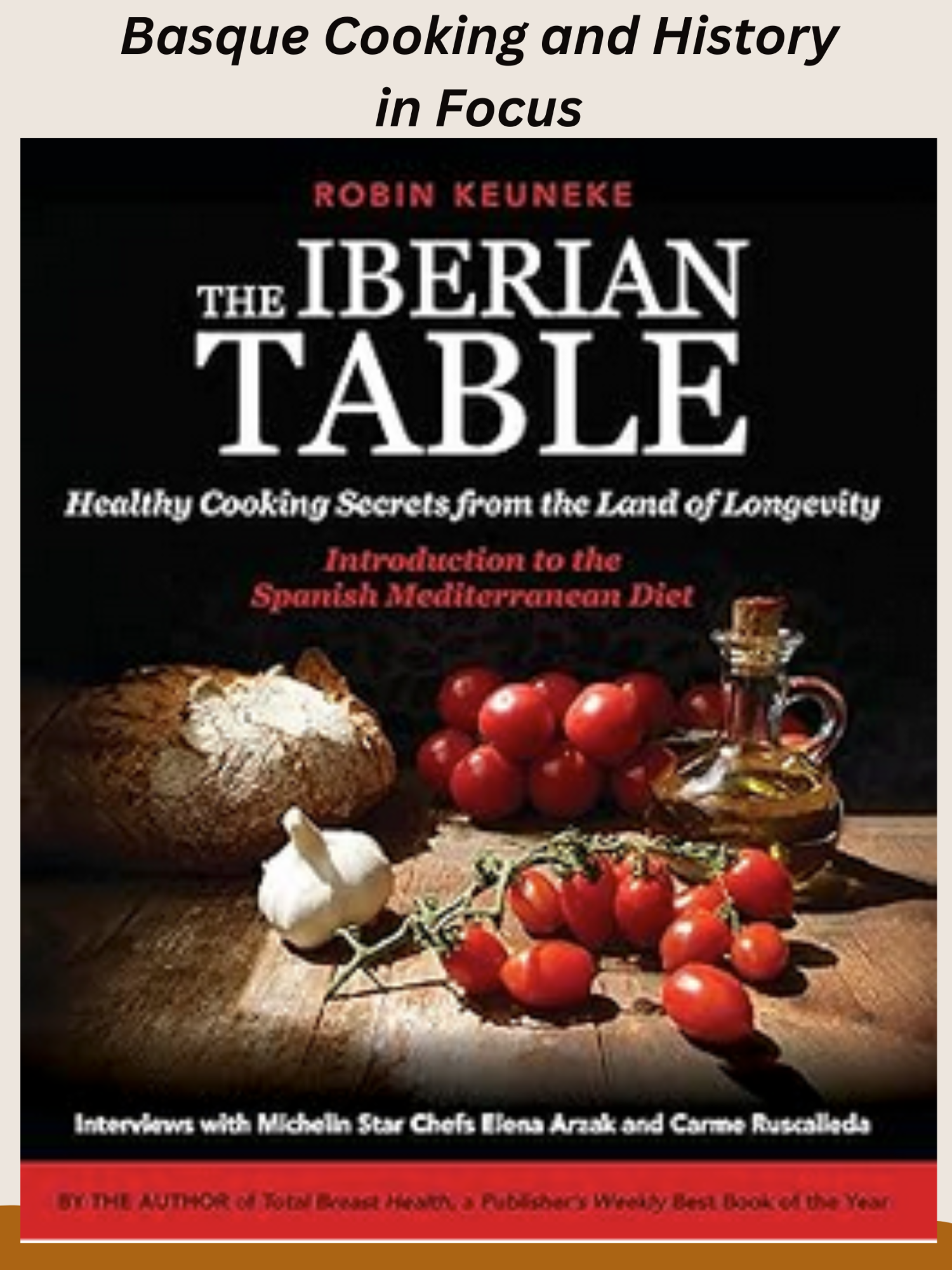
 Donate
Donate